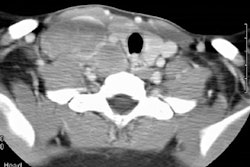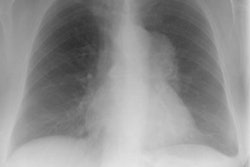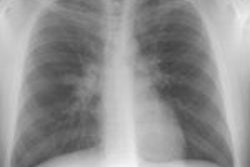Radiology 1997 Jun;203(3):795-800. Lymphoma: role of whole-body 2-deoxy-2-[F-18]fluoro-D-glucose (FDG) PET in nodal staging.
Moog F, Bangerter M, Diederichs CG, Guhlmann A, Kotzerke J, Merkle E, Kolokythas O, Herrmann F, Reske SN
PURPOSE: To compare 2-deoxy-2-[fluorine-18]fluoro-D-glucose (FDG) positron emission tomography (PET) with computed tomography (CT) in primary nodal staging of malignant lymphoma. MATERIALS AND METHODS: Sixty consecutive patients with untreated, histopathologically proved malignant lymphoma (aged 7-72 years; 33 with non-Hodgkin lymphoma, 27 with Hodgkin disease) underwent FDG PET and contrast material-enhanced CT for nodal staging. Lymph node regions identified at both CT and PET were regarded as actual locations of disease. Discordant results were verified with biopsy or clinical follow-up whenever possible. RESULTS: One hundred sixty of 740 evaluated lymph node regions were identified as diseased at both CT and PET. Of the 25 additional regions seen with PET, seven were true-positive; two, false-positive; and 16, unresolved. CT showed six additional disease manifestations; three were false-positive, and three were unresolved. Staging was changed in the four patients with the seven confirmed additional PET findings: from stage I to II in one patient and from stage II to III in three patients. Staging was changed from stage II to I in one of the three patients with false-positive CT findings. CONCLUSION: FDG PET may be more accurate for detecting nodal lymphoma than incremental CT.
PMID: 9169707, MUID: 97313103



